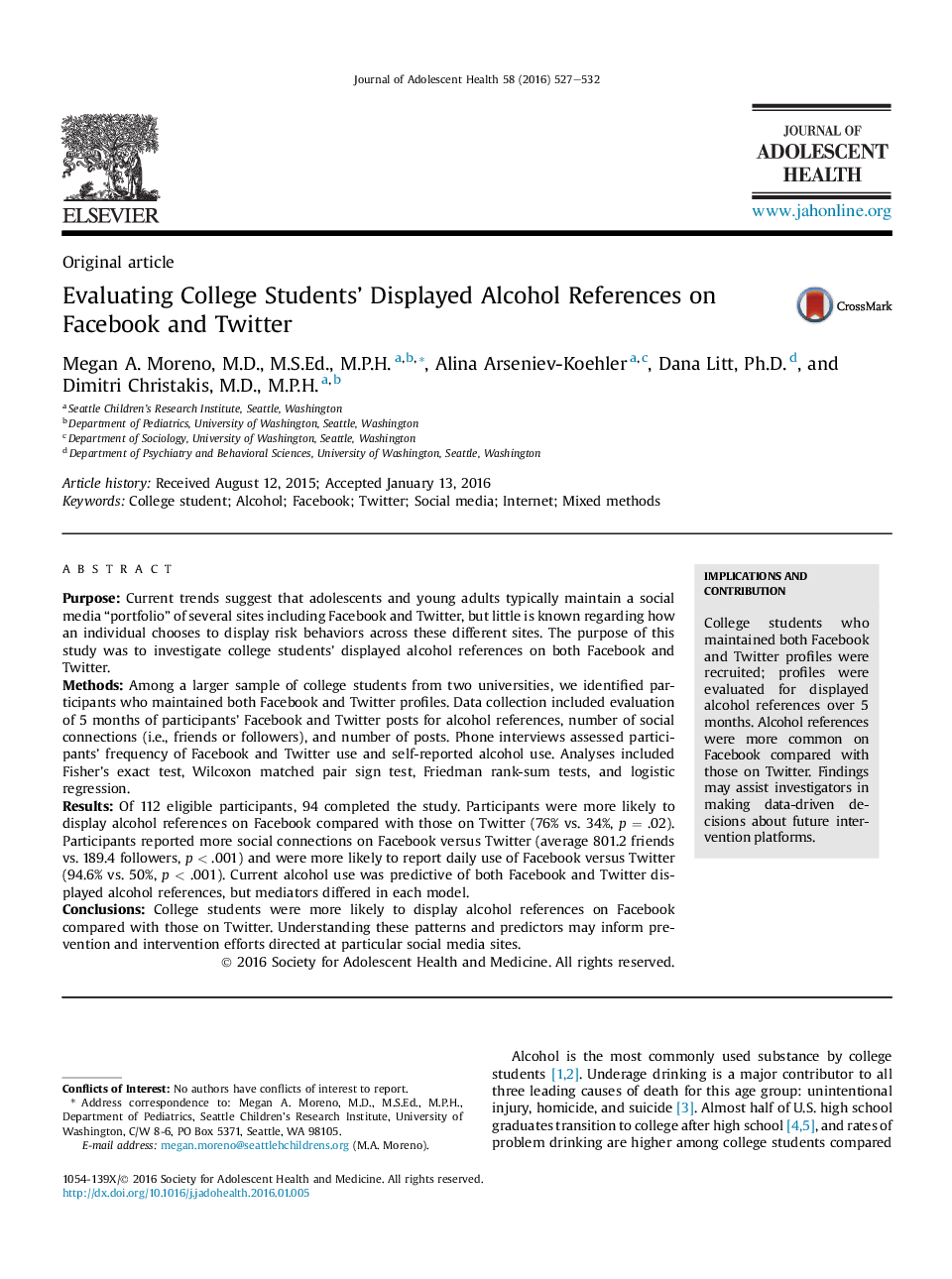| Article ID | Journal | Published Year | Pages | File Type |
|---|---|---|---|---|
| 1077932 | Journal of Adolescent Health | 2016 | 6 Pages |
PurposeCurrent trends suggest that adolescents and young adults typically maintain a social media “portfolio” of several sites including Facebook and Twitter, but little is known regarding how an individual chooses to display risk behaviors across these different sites. The purpose of this study was to investigate college students' displayed alcohol references on both Facebook and Twitter.MethodsAmong a larger sample of college students from two universities, we identified participants who maintained both Facebook and Twitter profiles. Data collection included evaluation of 5 months of participants' Facebook and Twitter posts for alcohol references, number of social connections (i.e., friends or followers), and number of posts. Phone interviews assessed participants' frequency of Facebook and Twitter use and self-reported alcohol use. Analyses included Fisher's exact test, Wilcoxon matched pair sign test, Friedman rank-sum tests, and logistic regression.ResultsOf 112 eligible participants, 94 completed the study. Participants were more likely to display alcohol references on Facebook compared with those on Twitter (76% vs. 34%, p = .02). Participants reported more social connections on Facebook versus Twitter (average 801.2 friends vs. 189.4 followers, p < .001) and were more likely to report daily use of Facebook versus Twitter (94.6% vs. 50%, p < .001). Current alcohol use was predictive of both Facebook and Twitter displayed alcohol references, but mediators differed in each model.ConclusionsCollege students were more likely to display alcohol references on Facebook compared with those on Twitter. Understanding these patterns and predictors may inform prevention and intervention efforts directed at particular social media sites.
